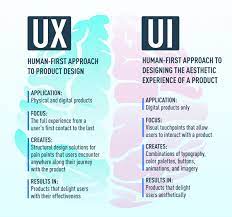The Importance of User Experience Design
User Experience (UX) design plays a crucial role in the success of any digital product or service. It encompasses all aspects of a user’s interaction with a company, its services, and its products. A well-thought-out UX design can significantly impact user satisfaction, engagement, and loyalty.
Understanding User Experience Design
UX design focuses on creating meaningful and relevant experiences for users. It involves understanding users’ needs, preferences, and behaviours to design interfaces that are intuitive, efficient, and enjoyable to use. By putting the user at the centre of the design process, UX designers aim to enhance usability and accessibility while meeting business goals.
The Benefits of Good UX Design
Good UX design can lead to several benefits for both users and businesses. For users, it results in a seamless and satisfying experience that makes it easy to achieve their goals. This can increase user engagement, retention, and overall satisfaction with a product or service.
From a business perspective, investing in UX design can lead to higher conversion rates, increased customer loyalty, and reduced support costs. By providing users with a positive experience, companies can differentiate themselves from competitors and build long-lasting relationships with their customers.
The Role of UX Designers
UX designers are responsible for researching user needs, defining user personas, creating wireframes and prototypes, conducting usability testing, and iterating on designs based on feedback. They collaborate closely with stakeholders such as developers, marketers, and product managers to ensure that the final product meets both user requirements and business objectives.
Conclusion
User Experience design is not just about making products look good; it’s about creating experiences that are intuitive, efficient, and enjoyable for users. By prioritising user needs and preferences throughout the design process, companies can deliver products that delight users while achieving their business goals.
Essential FAQs on User Experience Design: Elements, Examples, Process, and Key Components
- What are the 5 elements of user experience design?
- What is UX design with examples?
- What is the UX design process?
- What are the 4 parts of UX design?
What are the 5 elements of user experience design?
In user experience design, the five essential elements that form the foundation of a successful user experience are usability, usefulness, desirability, accessibility, and credibility. Usability focuses on how easy and efficient it is for users to achieve their goals within a system. Useful design ensures that the product or service fulfills a specific need or solves a problem for the user. Desirability involves creating an emotional connection with users through aesthetics and branding. Accessibility aims to make the design inclusive and usable by all individuals, regardless of their abilities. Finally, credibility establishes trust and reliability in the eyes of users, enhancing their overall experience with the product or service. By incorporating these five elements into UX design, designers can create experiences that are not only functional but also engaging and impactful for users.
What is UX design with examples?
User Experience (UX) design refers to the process of enhancing user satisfaction by improving the usability, accessibility, and overall experience of a product or service. It involves understanding users’ needs and behaviours to create intuitive and engaging interfaces that meet both user requirements and business goals. For example, a well-designed e-commerce website that allows customers to easily navigate through products, add items to their cart, and complete purchases seamlessly demonstrates effective UX design. Similarly, mobile apps with simple yet visually appealing layouts that guide users through tasks efficiently showcase the importance of thoughtful UX design in enhancing user interactions.
What is the UX design process?
The UX design process refers to the systematic approach that UX designers follow to create user-friendly and effective digital experiences. It typically involves several key stages, including research, ideation, prototyping, testing, and implementation. Initially, designers conduct user research to understand the needs and behaviours of the target audience. They then use this information to generate ideas and concepts for the design. Prototypes are developed to visualise the proposed solutions, which are then tested with real users to gather feedback and make necessary refinements. Finally, the approved design is implemented and launched, with continuous monitoring and iteration based on user feedback to ensure an optimal user experience.
What are the 4 parts of UX design?
In the realm of User Experience (UX) design, the discipline is typically broken down into four key components that form the foundation of a successful user-centric design process. These four parts include user research, information architecture, interaction design, and visual design. User research involves understanding the needs and behaviours of users to inform design decisions. Information architecture focuses on organising and structuring content in a way that is intuitive and easy to navigate. Interaction design deals with designing interactive elements that facilitate user engagement and task completion. Visual design encompasses creating aesthetically pleasing interfaces that enhance the overall user experience. By incorporating these four essential elements into UX design practices, designers can create products and services that resonate with users and achieve business objectives effectively.
